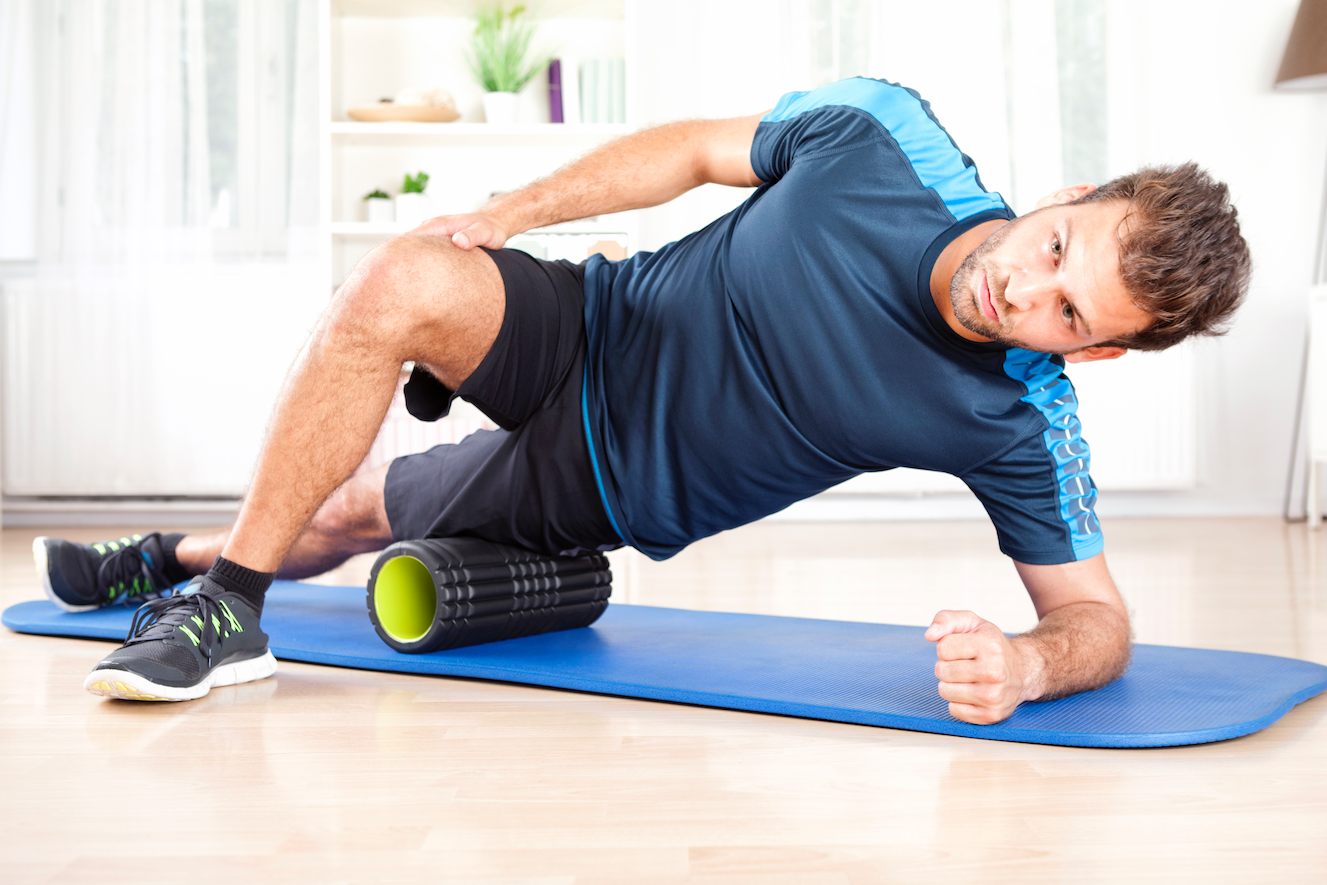What is the deal with foam rolling? I like to think of it as your own personal massage therapist. Of course it doesn’t do what a human can, but it can provide a bit of maintenance since most of us can’t afford a massage every day. We will have to understand a bit of anatomy to understand why mashing on your muscles can be beneficial.
What does foam rolling do?
The main component of our bodies that we need to understand for foam rolling is the fascia. Think of fascia as the sac that holds your muscles. It is made up of densely packed collagen fibers that create a pocket for your muscles. Think of your body as a bunch of muscles surrounded by a membrane that make it like one big muscle with different sections. That is why tight hamstrings can lead to a tight back.
Every time we wake up in the morning our muscles are wrapped up in a fuzz-like substance (a mix of collagen fibers, areolar tissue and fat cells). This layer of fuzz is typically thinned as we move and stretch. However, this fuzz can compound over time and cause stiffness. Foam rolling can break apart this fuzz and allow your muscles to move more freely. In a nutshell, any form of myofascial release (a fancy word for massage) creates a call to action by your body to help heal the area that is in pain. By mashing on a place that hurts, it creates more blood flow to that area, helping with the healing process. Myofascial release helps to break apart muscle fibers and adhesions that may be restricting some of the blood flow to that muscle.
One of the most common and most painful areas to foam roll is the iliotibial band, better known as the IT band. It runs down the middle part of the outside of the upper leg. Tightness can lead to the dreaded iliotibial syndrome, which is extremely painful. Clients ask me all the time for an IT band stretch. Sadly there is no direct stretch for the IT band. The only true way to work on it is through myofascial release. By lying on your side and using a foam roller, you can really target this area. I can’t think of a more painful yet productive use for the foam roller.
When should you start foam rolling?
I typically recommend that my clients use the foam roller after they have warmed up as well as when they finish a workout. Using it before helps to bring blood flow to the muscles and get them ready for action. Foam rolling post workout can help smooth out some of the adhesions and micro tears that were sustained during the workout and help with recovery.
Self-myofascial release isn’t just limited to foam rollers. Something as simple as a lacrosse ball can work wonders. Another product that I like to use is the Thera Cane. This bad boy is shaped like a candy cane and can reach around to your back and work out some of those knots that your spouse can never seem to get.
Be sure to always nurture and cherish your body — it is the only one we have. Maintaining a well-oiled machine is a daily endeavor. Thankfully we have more tools than ever to help us along our journey.
Related articles:
Try Online Yoga Classes for Senior Adults
Use These Online Resources to Workout With Your Kids!

